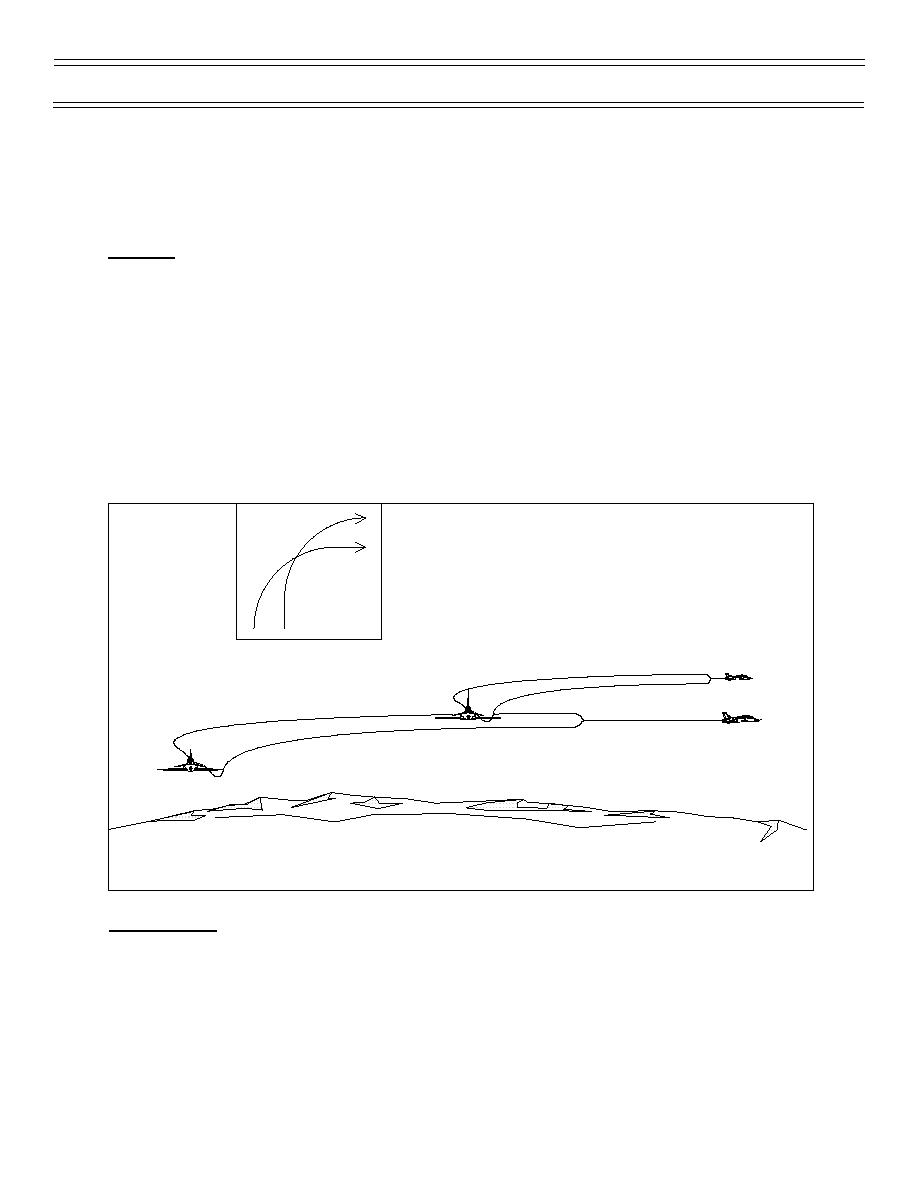
Tactical Formation
Flight Procedures
(Figure 9), in-place (Figures 10 and 11), and cross (Figure 13). A Tac turn maneuvers the section
90 degrees; in-place and cross turns maneuver the section 180 degrees. If the bandit/threat is
abeam the section, use a Tac turn. If the bandit/threat is behind the section, use a cross turn.
When the bandit/threat is behind and offset to one side of the section, use an in-place turn.
Tac Turn
The lead initiates the turn by calling, “[Call sign], Tac right/left.” The wingman acknowledges,
“[Two].” The mechanics of this turn are not dependent on actual lead or wingman position but rather
“inside” and “outside” position relative to the direction of turn (Figure 9). The outside man (i.e., the
aircraft farthest from the direction of the turn) will go to MRT and execute a 14-unit AOA turn, using
approximately 70 degrees AOB, tracking the nose of his aircraft on or slightly below the horizon to
maintain 300 KIAS. Upon completing the 90-degree turn, he reduces power to maintain 300 KIAS.
Check the inside man’s six and call, “Six clear.”
The inside man will wait until the outside man is nose on. He then goes to MRT, starts his engaging
turn of 14 units AOA, and maintains 300 KIAS. When he regains sight of the outside man, he will
check his six and call, “Visual, six clear.”
Inside-man
Outside-man
Figure 9: TAC TURN
In-place Turns
An in-place turn may be into or away from the wingman. During the in-place turn away, the wingman
keeps sight of the lead aircraft and adjusts his position with AOB and g accordingly. During the in-
place turn into, the wingman will lose sight of the lead and must adjust for combat spread after
reacquiring.
Away from the Wingman
The lead initiates the turn by calling, “[Call sign], in-place right/left.” The wingman acknowledges,
“[Call sign].” Both lead and wingman then go to MRT and begin engaging (energy-sustaining) turns
of 180 degrees while maintaining 300 KIAS, 14 units AOA, and approximately 70 degrees AOB
Page 16
(11-98) Original


 Previous Page
Previous Page
